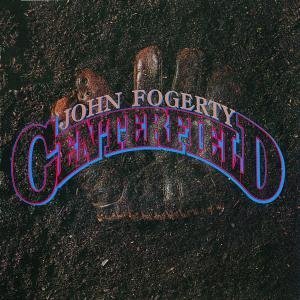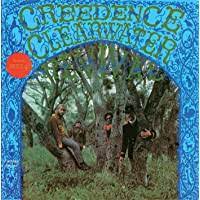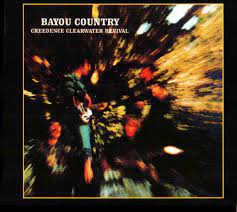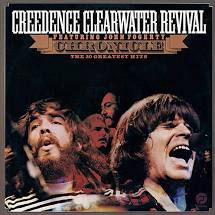Who among us hasn’t stopped dead and listened in awe to a great guitar solo, or sax bit, or piano flourish and wondered how anyone can get to be so good at playing that instrument? Maybe wished we had that level of talent too. Well how’d you like to be able to play just about all the instruments like that! Today we look at one guy who seemingly can do just that. Todd Rundgren turns 76 today!
Rundgren, or “Runt” as many call him, played in bands along the way including Nazz and Utopia, and often has used his musical friends to help out on his solo works (as most musicians do)…but not always. Take his 1978 hit “Can We Still Be Friends?” for instance. The single off his eighth album, Hermit of Mink Hollow, is all Todd. The whole album is really; even the title references that – Mink Hollow Road, in Woodstock, is where his house was and where he recorded the whole thing himself. The haunting song sounds like an entire band, but was just Todd playing instrument after instrument and over-dubbing the tapes. Even all those backing vocals are him. He wrote and produced the whole album at home all by himself, in fact, two decades before Pro Tools and other computer software would make such tasks semi-easy.
“Can We Still Be Friends” was a top 30 hit for Todd in the U.S. Later Robert Palmer also had a hit with his version of it… but Robert needed four backing musicians.
So, Todd went it alone, which leads us to the Stunningly Solo Seven – seven musicians who’ve done it all – literally – on their records. Like…
Paul McCartney. McC, who turned 82 this week by the way, was at his best with a good band around him. A group called The Beatles comes to mind. Wings wasn’t half-bad either. But once in awhile, he’d follow his own instincts without even trying to listen to other opinions or get others involved. The results have been three albums titled McCartney, McCartney II and recently, McCartney III. We always knew he could write a fantastic tune and play bass well but those albums show us his range was quite a bit broader than that. Take the synthesizer-heavy “Coming Up” from the second such album in 1980. Everything on it was “come up” with by Paul – the writing, the singing, the instruments, the engineering and production. And it became his first North American hit of the ’80s. Mind you, he’d had a few more of those in the preceding two decades!
Steve Winwood. Stevie had been a teen prodigy in the ’60s, a good singer, songwriter and keyboardist. He helped both the Spencer Davis Group and Traffic become major acts all before he was 20. But when he decided to go it alone, he often seemed to do just that. His second solo record, Arc of a Diver is a great example of that. He was the main writer of all seven songs (on the title track, Vivian Stanshall of the Bonzo Dog Doo Dah Band is listed as a co-writer) and the producer. The album went platinum in North America and scored him a major hit with “While You See A Chance” and got a bit more airplay for the tasteful song “Arc of a Diver”. On that one, he plays synthesizers of course, but also piano, electric and acoustic guitars, fretless bass, drums and a mandolin!
Dave Grohl, aka Foo Fighters. He was barely noticed behind the drums (and Kurt Cobain) in Nirvana, but when that band came to a crashing halt, Dave went for it, (or took a chance in Steve Winwood’s parlance). Although not as “iconic” as Nirvana, the Foo Fighters have been running for close to 30 years, have a bevy of platinum albums and a museum’s worth of Grammy Awards. Now, of course, as anyone who’s seen them knows, the Foos are a band, led by Grohl. But it wasn’t always that way. The first, self-titled album in 1995, including this great tune, was Dave and … well, just Dave. Except for a wee bit of added guitar from Greg Dulli of the Afghan Whigs on one single track, Grohl did it all. Wrote the songs, played the guitars, drums, bass, anything else he deemed necessary, recorded it and produced it. He really only started assembling a band when he realized he loved playing live and wasn’t quite good enough to play a guitar, drums, bass and sing all simultaneously on stage.
John Fogerty. Whereas Grohl is Mr. Gregarious it would seem, Fogerty seems… well, possibly just a tiny wee bit prickly to be around. He blew up Creedence Clearwater Revival essentially because he couldn’t get along with the others (including his brother Tom) and seemed to feel that he was the only one in the band with any writing skills. He might not have been totally wrong on that, but it didn’t make him popular with the bandmates. So when it was time to make more music, not surprisingly, John seemed to go it alone. His huge 1985 hit album Centerfield, with the title track baseball anthem and the hit “The Old Man Down The Road” was written entirely by him and produced, and played. He’d done about the same thing with his 1973 solo debut The Blue Ridge Rangers , although that one consisted of cover songs like the old country standard “Jambalaya”.
Stevie Wonder. Like Winwood, this Stevie was a teen sensation in the ’60s and quickly established himself as a fantastic piano player and singer, but by the time he was leaving his teens he showed he was a lot more than just that. In sharp contrast to many other big Motown acts who tended to be micromanaged by label boss Berry Gordy Jr., Wonder showed increasing control over his records in the ’70s and by 1972’s Talking Book, was close to a one-man show. The great song “I Believe” on it, used to great effect at the end of the movie High Fidelity, was all-Wonder. Although his then sister-in-law Yvonne Wright helped write it with him, Stevie played everything – piano, clavinet, Moog synthesizer and bass, sang it and produced it himself.
Lenny Kravitz. Unlike Stevie, Lenny pretty much started out doing it all by himself. His 1989 debut album Let Love Rule was mostly just Lenny. He wrote the songs, played most of the instruments and produced it himself. Although the title track did have a couple of session musicians joining him, the song “Sittin’ on top of the World” was entirely by him.
So there you have it. The Stunningly Solo Seven, great artists who took “DIY” to another level!











